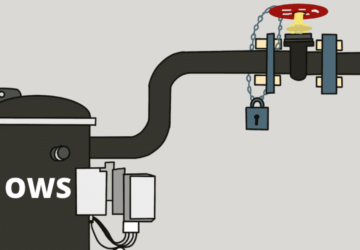Hybrid work is here to stay – but how exactly can it benefit your company?
Like with anything else, hybrid work models aren’t perfect.
They do come with some small problems. Not to mention, they can be difficult to implement across large companies
However, it’s fair to say this: the advantages far outweigh the disadvantages.
This is exactly why Amazon, Apple, Microsoft, and tons of other global brand names have embraced hybrid work with open arms. It benefits them – and it also benefits their employees. It’s the perfect win-win situation.
If you’re still skeptical about hybrid work, it’s understandable. After all, it’s still in its early stages (remember, remote work only came into play back in 2020). However, this guide is here to tell you that hybrid work is worth giving a shot, even if you eventually revert back to a traditional work model.
Want to know the top 7 benefits of hybrid work? Start with number 1 directly below.
Number 1: Better Employee Collaboration
Let’s kick this list off by discussing employee collaboration.
When employee collaboration levels are high, all parties win.
Companies have productive teams and employees work better. It’s invaluable.
Employees want remote work for morale and convenience reasons. Hence, by the end of 2022, 22% of all professional jobs will be remote (Forbes).
With better employee collaboration efforts comes stronger work output – simple. This is especially true when employees have a collaborative virtual workspace to use.
What Is a Virtual Workspace?
A virtual workspace is an environment that employees can use to collaborate together over the internet from any location. Whether its video calling or sharing files, life is made easier for employees when they have the right virtual workspace platform at their disposal.
Number 2: Happier Employees – It’s True, Remote Workers Are 20% Happier!
Making your employees happier is a big challenge for any company. However, it seems that if you want to do this, then implementing a hybrid work model is the best direction to head in.
A survey conducted by Tracking Happiness found that the ability to work remotely from home has a hugely positive impact on employees. Specifically, it was concluded that remote workers are 20% happier whilst working remotely. Even traditionalist company managers will find this interesting to discover.
Of course, this doesn’t apply to every employee on the planet. In fact, some employees don’t like working from home. This is largely due to the fact that it removes the social element of work that they’ve come to love and enjoy.
Having said this, the trends seem to point to the fact that the majority of employees do enjoy working remotely, as it makes them happier and more content with their roles.
Number 3: Reduced Staff Turnover
Staff turnover is a nightmare for companies all around the world.
For decades, management teams have been trying to figure out the magic behind maintaining employee loyalty – and it seems like hybrid work might be the answer.
By allowing employees to work from home on certain days of the week, this can drastically lead to reduced staff turnover. Not only is this good for morale, but it’s also good for company culture and reputation.
If you’re a company that’s recently been struggling with high levels of staff turnover, then you might want to consider implementing a hybrid work model this year to see if it works. There’s a really good chance it will – especially when you consider the fact that 54% of employees say they would change jobs for one that offered them remote, flexible work (Forbes).
Number 4: Be More Eco-Friendly – It’s Good for the Planet
If you employee 50+ who all commute to work from different locations, then it’s not great for the environment. Plus, it’s not seen as a long-term, sustainable option. However, by switching to a hybrid work model (say, where employee work remotely on Mondays and Fridays), this will allow you to reduce your environmental impact. Plus, on the days that your employees do come into work, you can encourage them to walk or get public transport for added benefit.
Number 5: Access a Wider Pool of Talent
Let’s say that you’re a medium-size company operating in Cincinnati. Cincinnati has a modest population of around 303,000 people, which means you have access to a limited pool of talent.
On the other hand, if you have a hybrid work model in place, this automatically allows you access to a wider pool of talent from other major cities, such as New York and San Antonio. Employees from these other cities will be able to use technology to work from home without having to travel to your office every day, which is convenient for everyone involved.
In some cases, you might even want to hire employees from different countries and time zones. This is very common practice amongst web design and marketing companies.
Number 6: Cost Savings
Every company on the planet wants to save costs and manage their books better.
Finding ways to save money is the trickiest part – it’s not easy, no matter which industry you operate in.
Fortunately, hybrid work is a guaranteed way to reduce your costs. The reason for this is because it means you can reduce your office space, as well as in-person training (as some remote employees can do their training online).
Unsurprisingly, some companies have even ditched their hybrid work models to go fully remote, instead. This means no longer have any business HQ or office spaces. Instead, everyone works from home. This is a more extreme example, but it’s something that many companies have embraced.
Number 7: Employee Monitoring Software
One of the biggest arguments against hybrid work is this:
‘It makes it impossible to track and monitor employees.’
On the surface, this would appear to be true, as employees are no longer visibly in front of you in the office.
However, employee monitoring software has now gone mainstream. This type of software enables you to track and monitor employees whilst they work remotely, such as how long they’ve been active on their computers for. It’s very handy for companies who are big on performance and analytics.








